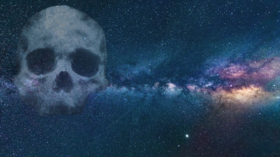‘Matrix microscopy’: Powerful stargazing tech allows scientists to see directly through skulls without need for surgery

Direct observation of live brains is difficult and requires invasive and dangerous surgery to cut through skin and bone. Now scientists can peer through skulls thanks to powerful technology borrowed from the field of astronomy.
Porous and often inconsistent structures like bone tend to scatter light in unpredictable ways, frustrating efforts to ‘see’ through them using medical technology.
However, scientists have now discovered a new method to create a clear image of what lies behind the skull from scattered infrared light shone by a laser.
“Our microscope allows us to investigate fine internal structures deep within living tissues that cannot be resolved by any other means,” said physicists Seokchan Yoon and Hojun Lee from Korea University.
A previous technique called three-photon microscopy could achieve limited success capturing images of neutrons in mice brains, but anything larger than a mouse skull required surgery.
That method also requires longer wavelengths and a specialized gel to work and has limited penetration, with significant risk of inflicting at least some damage to the subject.
However, combining this existing technique with methods typically deployed in ground-based astronomy, Yoon and his team created high resolution images of a mouse's neural networks from behind its skull.
The astronomy approach, known as computational adaptive optics, typically mitigates distortion in ground-based optical astronomy readings, but it proved invaluable in seeing behind the skull.
Also on rt.com A star is born: Scientists capture incredibly detailed image of stellar nursery 8,500 light-years awayThe new imaging technology, known as laser-scanning reflection-matrix microscopy (LS-RMM), is so called because it derives a complete dataset of input-output response from the scattered laser light.
In other words, some of the laser's photons can pass through the skull while others are scattered in a variety of different directions. The new process takes data derived from all of the photons into account to build a more complete picture of the brain behind the bone wall, by correcting any distortions.
“This will greatly aid us in early disease diagnosis and expedite neuroscience research,” the researchers say.
For now, one major drawback of the method is the sheer volume of computational power required to make sense of the reflection matrix. But the technique is still in its infancy and advances in computational power continue on a regular basis.
Like this story? Share it with a friend!














